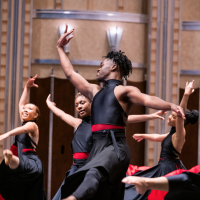Several weeks ago I wrote about my concerns that the community’s nonprofits, particularly arts nonprofits, were likely either to wither out of existence or be winnowed down by the dramatic effects of the economic recession. I quoted the legendary Paul Light as well as the brilliant cultural consultant Holly Sidford in hoping that our arts community would have the audacity to use the challenges ahead to transform themselves toward the new and alternative futures already emerging.
Well, Sidford came to town today. She presented findings from her firm’s study of 28 Seattle area arts organizations’ response to the recession, which is getting a lot of attention in the cultural community nationally. The meeting was convened by the Community Partnership for Arts and Culture (CPAC) as the latest Arts Community Roundtable. It was attended by about 50 individuals – artists and representatives of arts organizations – with far too many important organizations conspicuous by their absence. The room should have been packed.
Holly’s presentation was a wake-up call, especially for those who remain in denial of the radical change that has already taken place in the environment surrounding the arts. It was also a call to arms for transformation as radical as the environmental shifts now underway. Among her many valuable comments, I noted these:
- “Not acting is acting. If you do nothing, the environment will act on you.”
- “Organizations embedded in their communities are the most likely to survive. To be embedded means the organization provides meaningful services valued by the community, and the community shows up to protect its interest in the organization.”
- “Transformation is not about survival. It’s about evolution. The evolutionary cycle is growth, conservation, collapse, release and re-organization. Evolution is systematic error management. Things will fail. Learn to fail faster and fail better to succeed sooner.”
- And quoting consultant David LaPiana; “Give up strategic planning. Commit to strategic thinking and developing strategies. The plan will follow.”
After her succinct and chilling presentation, four focus groups – small and larger organizations, artists and funders – were convened to brainstorm ideas that might be actionable by the arts community and transformative of the sector itself. With no time for an in-depth session, ideas could only be half-formed. Still, some are worth noting:
- In the spirit of “be the change you want to see,” the small arts groups suggested creating electronically conducted “criticism circles” to combat the shrinking print media attention to arts criticism and coverage.
- This group also suggested an ongoing group dialogue they called SALT – Sustainable Arts Leadership Talk – to share knowledge and expertise.
- The individual artist group suggested a more formal and powerful artist network be developed (Does nobody remember the early days of NOVA, asks this old artist-organizer?)
- They also brilliantly noted the importance of artists actively addressing community issues. (See the strategy articulated by CPAC in its 2000 Northeast Ohio Cultural Plan: “Train cultural leadership to address relevant public issues.”)
- The larger organizations once again said there should be more collaboration. But then wisely noted that for success the arts needed to let go of the mind set barrier of territoriality and set concrete goals for any collaboration.
- They also suggested taking advantage of people’s inclination to stay at home and take their programs to their audience.
- The funders (the Cleveland and Gund foundations and Cuyahoga Arts and Culture were represented) had three transformative ideas: 1) We could work better together (which, it might be noted, two of the three represented have a history of doing); 2) We could expand the definition of arts to better demonstrate the deeper and broader community benefits of the arts; and 3) We could focus and invest in much greater depth on advancing access to the arts for children.
So here’s the challenge: Will we choose to act? Will we take up the challenge of transformation and move as radically and audaciously as the seismic shift in the environment demands? Will we be positioned to grow when the resource picture changes? Or will we be a shadow of our former selves, withered and winnowed into a marginalized collection of elites sitting on the sidelines of the economy and the community’s interests?
